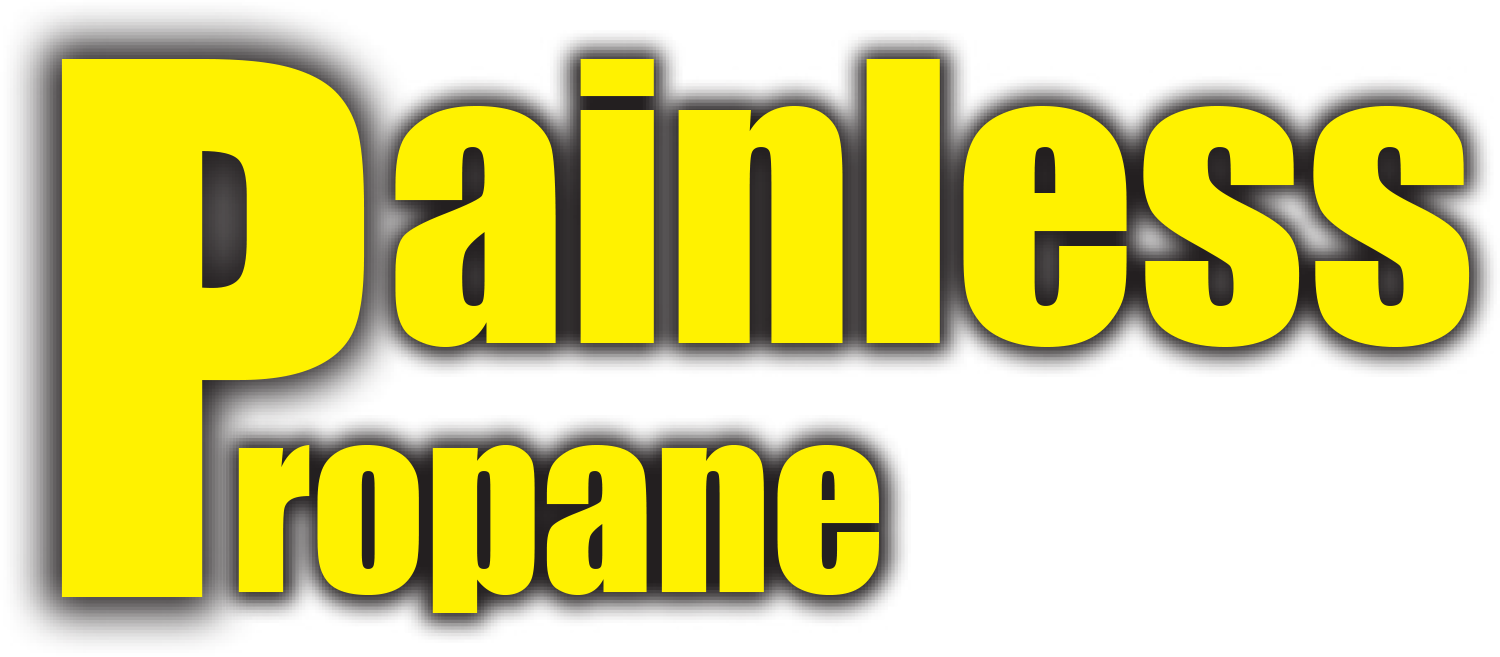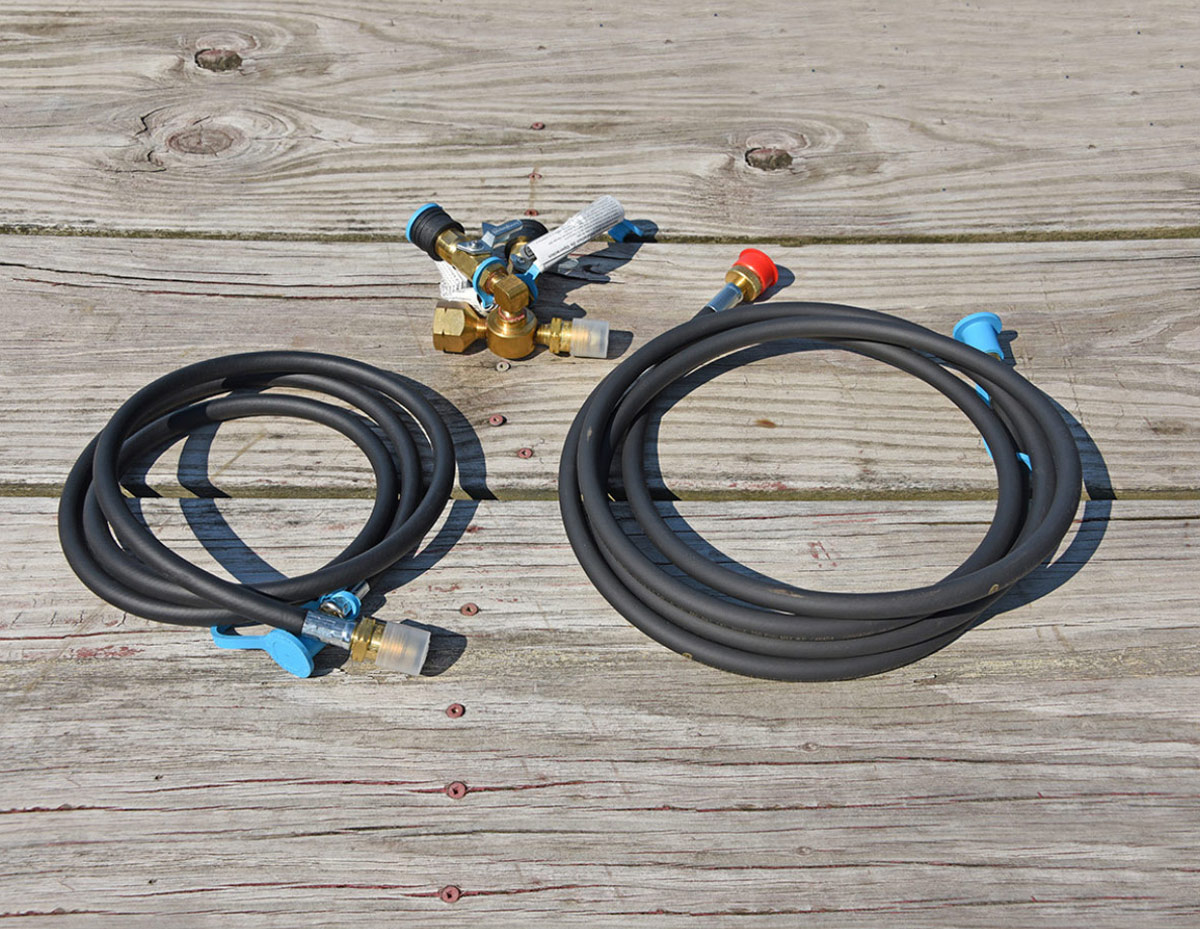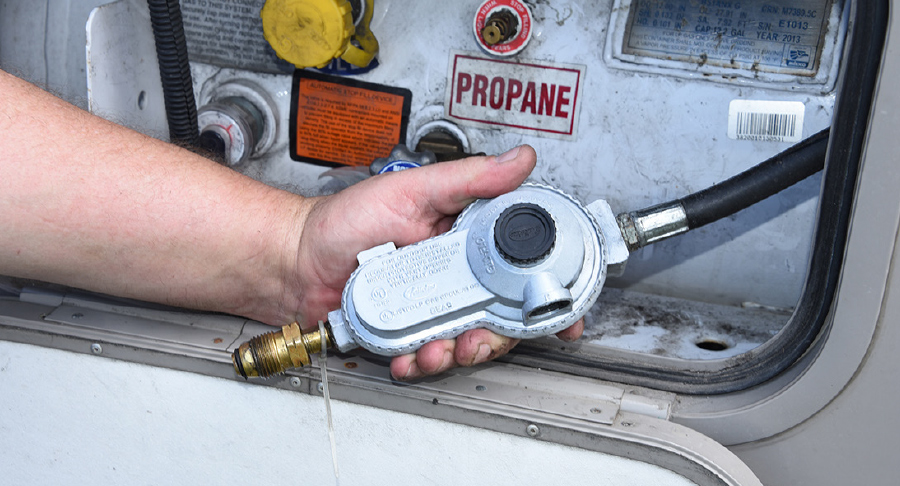
ropane, also known as LP-gas, is the fuel of the RV lifestyle. It oftentimes provides us with conveniences like hot water, a stove, a refrigerator and a furnace and also can fuel exterior appliances like grills, barbecues and fire pits. The popularity of factory-installed exterior propane connections and even complete exterior kitchens provide additional convenience for those who enjoy cooking and entertaining outdoors — but what if your RV has neither?
Of course, you can still fuel your outdoor gas appliance(s) with disposable propane cannisters, but these take up space in the exterior storage compartments — and if you run out, you’ll have to take the party back indoors, take a trip to the local store or borrow a cannister from a friendly neighbor.
If any of these scenarios are familiar, you’ve probably longed for an exterior propane connection that allows you to use gas from the RV’s main supply — either the propane tank in a motorhome or the propane cylinders in a travel trailer or fifth wheel. Stop wishing. If your RV didn’t come so equipped from the factory, you can install an exterior connection yourself in a few minutes with the right parts and a few simple hand tools. Cost for this project was a little more than $100.
But first, a little primer on propane connections. There are two different types: High pressure and low pressure. High-pressure connections are used when you’re tapping directly off the tank or cylinder before the regulator. A low-pressure connection is used after the regulator. When using the latter, you can connect directly to a device or appliance without using a regulator on the device itself, because the gas pressure is already regulated to 11 inches of water column. A high-pressure connection comes from the RV’s tank or cylinder and goes directly to the regulator on the device or appliance.


The Sturgi-Stay T-fitting is beneficial because it provides you with two high-pressure ports, which can serve as inlets or outlets. For example, if you’re operating off the motorhome’s tank, both of the hoses can serve as outlets to fuel a barbecue grill and a griddle. If you don’t want to use the RV’s propane supply or the on-board tank runs empty, you can simply turn off the tank valve and one of the ports on the T-fitting can be routed to an exterior propane cylinder with the aforementioned “fill” hose. It’s nice to have options.
We should note that while this installation provides you with a couple of “whips” to connect a propane-fueled device or appliance to the RV’s propane tank/cylinder, it does not mimic a factory-installed system that runs beneath the RV with a quick-disconnect on the passenger side. While such an upgrade is possible, you would have to use components and procedures outlined in the National Fire Protection Association (NFPA) 1192 standard for recreational vehicles. It is fairly complex with specific language, so if you would like to have this sort of work done, it is best to seek a RVIA-certified technician to make sure you conform to the 1192 standard. Note also that the “fill” hose is just a gas hose, not a liquid propane hose, and as such, can’t be used to pressure fill the onboard tank.
















